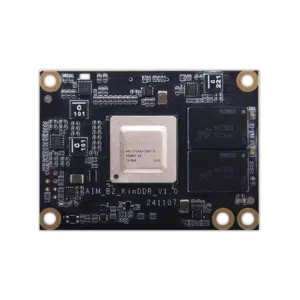The Role of Edge AI Devices in Real-Time Analytics
The Role of Edge AI Devices in Real-Time Analytics
Blog Article
How Edge AI Products Enable Better Operations
Discovering the Advantages of Edge AI Units
Synthetic intelligence (AI) has reshaped many areas of our lives, and its request at the edge is creating dunes in the computer industry. edge ai devices which involves deploying AI models directly on units like receptors, cameras, and smartphones, has appeared as a innovative approach to managing data and executing tasks. Unlike cloud-reliant AI techniques, edge AI works nearer to where in fact the data is generated. That change delivers a number of advantages, placing edge AI as a game title changer in areas including healthcare to retail to professional automation.

Here, we'll discover some of the important benefits of side AI products and how they're shaping the future.
Faster Control and Real-Time Answers
One of the most substantial advantages of side AI is its capability to method data domestically on the device, rather than depending on a distant cloud server. The end result? Quicker handling speeds and real-time responses. For example, in autonomous vehicles wherever every millisecond counts, side AI may analyze environmental knowledge immediately to make choices, such as braking or steering adjustments, without the latency related to cloud communication.
According to recent data, side AI products can reduce decision-making latency by as much as 75% compared to cloud-dependent solutions. That makes them perfect for time-sensitive applications, such as for instance video analytics in detective or wise production systems.
Improved Knowledge Solitude and Protection
Privacy and knowledge security are growing issues in a highly related electronic world. Since side AI handles information processing domestically, sensitive data doesn't need to go a cloud machine, reducing the chance of interception or breaches. That localized approach gives businesses more control over their data and ensures compliance with solitude rules, particularly in industries like healthcare and finance.
The raising use of these devices is basically driven by privacy-conscious policies and a desire for on-device computation. Reports suggest that by 2025, a lot more than 50% of AI-generated data is going to be refined at the edge to make certain higher data security.
Paid off Dependence on Internet Connection
Cloud-based AI programs count heavily on stable web connectivity to operate effectively. iot edge computing, on one other hand, prosper in environments wherever connection might be unreliable or unavailable. Since side AI processes knowledge directly on the device, it may perform seamlessly without the necessity for regular access to a network.
For instance, in distant agricultural settings, side AI devices can analyze temperature designs, earth conditions, and plant data in real-time to aid with predictive farming, even if disconnected from the internet. It's estimated that edge research can reduce data transfer fees by as much as 70%, making it more cheaply viable in areas with confined bandwidth.
Power Efficiency and Decrease Expenses
Edge AI products are created to improve energy consumption. By handling information on-device, they reduce the necessity to send enormous datasets to cloud machines, lowering both bandwidth usage and power costs. This makes a significant difference, particularly in industries where power performance is a important factor.
Businesses deploying edge AI frequently experience reduced detailed charges while they prevent the repeating costs associated with high-volume cloud storage and data transmission. Furthermore, side AI's low-power hardware assures devices can perform complex computations without draining assets, rendering it a sustainable choice for IoT (Internet of Things) ecosystems.
Designed AI Options for Certain Use Instances

Still another significant advantageous asset of edge AI is their power to deliver customized answers for special scenarios. Unlike simple cloud-based AI versions, edge AI programs could be fine-tuned to enhance performance for unique applications. For instance, side AI units found in retail options provides customized recommendations and easy checkout experiences. Equally, in industrial automation, they are able to monitor equipment efficiency and anticipate preservation needs with high precision.
That adaptability has generated an estimated 30% growth in edge AI deployments before year, highlighting their value in giving targeted answers across varied industries.
Driving Innovation with Side AI
Edge AI devices are at the lead of development, providing unmatched speed, solitude, and efficiency. By permitting real-time decisions, safeguarding sensitive knowledge, reducing dependence on connectivity, and selling energy savings, they provide a good, scalable option for a number of applications. Furthermore, as technology improvements, the integration of side AI is expected to increase, unlocking new possibilities and redefining how firms leverage AI.
Report this page